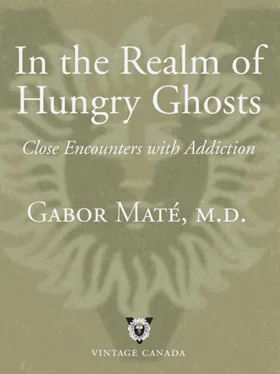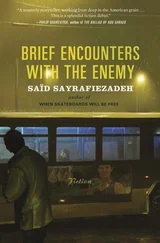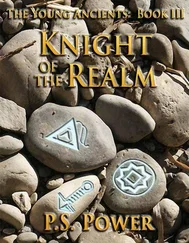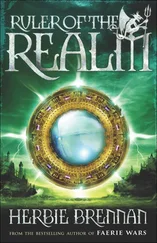We need hardly mention legally permissible substance dependencies on nicotine and alcohol: in terms of scale, their negative consequences far surpass the damage inflicted by illicit drugs. And what do the mass marketing and advertising of these often-lethal substances reflect if not addiction? Exactly like drug pushers who are themselves addicted, tobacco companies behave as if they, too, were driven by addiction: in their case, to profit.
In August 2006 U.S. District Judge Gladys Kessler ruled that the big tobacco companies had deceived the public concerning the health effects of their product:
[The] defendants have marketed and sold their lethal product with zeal, with deception, with a single-minded focus on their financial success, and without regard for the human tragedy or social costs that success exacted. 5
Treating smoking-related illnesses has incurred costs in the multiple hundreds of billions of dollars. According to the New York Times, there are currently 44 million adult smokers in the U.S., and four out of five are addicted to tobacco. “Tobacco kills 440,000 smokers every year in the United States, and secondhand smoke inhaled by bystanders claims another 50,000.” 6
How can we compare the misdemeanours of my patients—petty dealers thrown against the wall and frisked by police in the back alleys of the Downtown Eastside—with those of their respectable counterparts in corporate boardrooms? In May 2007, Purdue Pharma, a giant drug manufacturer, pleaded guilty to criminal charges that the firm had “misled doctors and patients” in claiming that their product, OxyContin, was less addictive than other opiate medications. “That claim,” said the New York Times, “became the linchpin of an aggressive marketing campaign that helped the company sell over $1 billion of OxyContin a year…But both experienced drug abusers and novices, including teenagers, soon discovered that chewing an OxyContin tablet—or crushing one and then snorting the powder, or injecting it with a needle—produced a high as powerful as heroin.” 7
We see that substance addictions are only one specific form of blind attachment to harmful ways of being. Yet we condemn the addict’s stubborn refusal to give up something deleterious to his life or to the lives of others. Why do we despise, ostracize and punish the drug addict when as a social collective we share the same blindness and engage in the same rationalizations?
To pose that question is to answer it. We despise, ostracize and punish the addict because we don’t wish to see how much we resemble him. In his dark mirror our own features are unmistakable. We shudder at the recognition. This mirror is not for us, we say to the addict. You are different, and you don’t belong with us. Ralph’s critique, for all its flaws, is too close for comfort. Like the hardcore addict’s pursuit of drugs, much of our economic and cultural life caters to people’s craving to escape mental and emotional distress. In an apt phrase, Lewis Lapham, long-time publisher of Harper’s Magazine, derides “consumer markets selling promises of instant relief from the pain of thought, loneliness, doubt, experience, envy, and old age.” 8
According to a Statistics Canada study, 31 per cent of working adults aged nineteen to sixty-four consider themselves workaholics, who attach excessive importance to their work and are “overdedicated and perhaps overwhelmed by their jobs.” “They have trouble sleeping, are more likely to be stressed out and unhealthy, and feel they don’t spend enough time with their families,” reports the Globe and Mail. Work doesn’t necessarily give them greater satisfaction, suggested Vishwanath Baba, a professor of Human Resources and Management at McMaster University. “These people turn to work to occupy their time and energy” 9—as compensation for what is lacking in their lives, much as the drug addict employs substances.
At the core of every addiction is an emptiness based in abject fear. The addict dreads and abhors the present moment; she bends feverishly only towards the next time, the moment when her brain, infused with her drug of choice, will briefly experience itself as liberated from the burden of the past and the fear of the future—the two elements that make the present intolerable. Many of us resemble the drug addict in our ineffectual efforts to fill in the spiritual black hole, the void at the centre, where we have lost touch with our souls, our spirit, with those sources of meaning and value that are not contingent or fleeting. Our consumerist, acquisition-, action-and image-mad culture only serves to deepen the hole, leaving us emptier than before.
The constant, intrusive and meaningless mind-whirl that characterizes the way so many of us experience our silent moments is, itself, a form of addiction—and it serves the same purpose. “One of the main tasks of the mind is to fight or remove the emotional pain, which is one of the reasons for its incessant activity, but all it can ever achieve is to cover it up temporarily. In fact, the harder the mind struggles to get rid of the pain, the greater the pain.” 10So writes Eckhart Tolle. Even our 24/7 self-exposure to noise, emails, cell phones, TV, Internet chats, media outlets, music downloads, videogames and non-stop internal and external chatter cannot succeed in drowning out the fearful voices within.

Not only do we avert our eyes from the hardcore drug addict to avoid seeing ourselves; we do so to avoid facing our share of responsibility.
As we have seen, injection drug use more often than not arises in people who were abused and neglected as young children. The addict, in other words, is not born but made. His addiction is the result of a situation that he had no influence in creating. His life expresses the history of the multigenerational family system of which he is a part, and his family exists as part of the broader culture and society. In society, as in Nature, each microcosmic unit reflects something of the whole. In the case of drug addiction, the sins of entire societies are visited unevenly on minority populations.
We know, for example, that a disproportionate number of prisoners incarcerated for drug-related crimes in the jails of the United States are African-American males. In 2002 45 per cent of the prisoners in U.S. jails were black, and according to the Department of Justice black males have about a one in three chance of being jailed at least once in their lives. 11In federal prisons, an estimated 57 per cent of inmates have been convicted of drug-related crimes, and drug offenders represented the largest source of jail population growth between 1996 and 2002—increasing by 37 per cent. 12The fate of black youth has much to tell us about the larger society in which their stories unfold. Similarly, there is an extraordinarily high ratio of Native Canadians among my Portland patients—and in Canada’s drug-using population and prisons.
Dr. Robert Dupont, former U.S. drug czar, interprets such facts as flowing from what he calls the “tragic vulnerability” of traditional cultures to alcohol and drug problems. He describes the present susceptibility of Aboriginal minority populations to addiction as “one of the sad paradoxes of the world experience with alcohol and drug abuse.”
To see Native Americans suffer from the use of alcohol and other drugs, and even cigarettes, or to see similar suffering among Australian aborigines, is to face the painful reality that traditional cultures are not prepared to withstand exposure to modern drugs and to tolerant values governing drug-taking behaviors. 13
There is, perhaps, a much more specific and robust cause for minority drug use than “tolerant values” toward drug taking. In fact, given the high incarceration rate of minority members, it’s hard to see what these “tolerant values” even are.
Читать дальше













